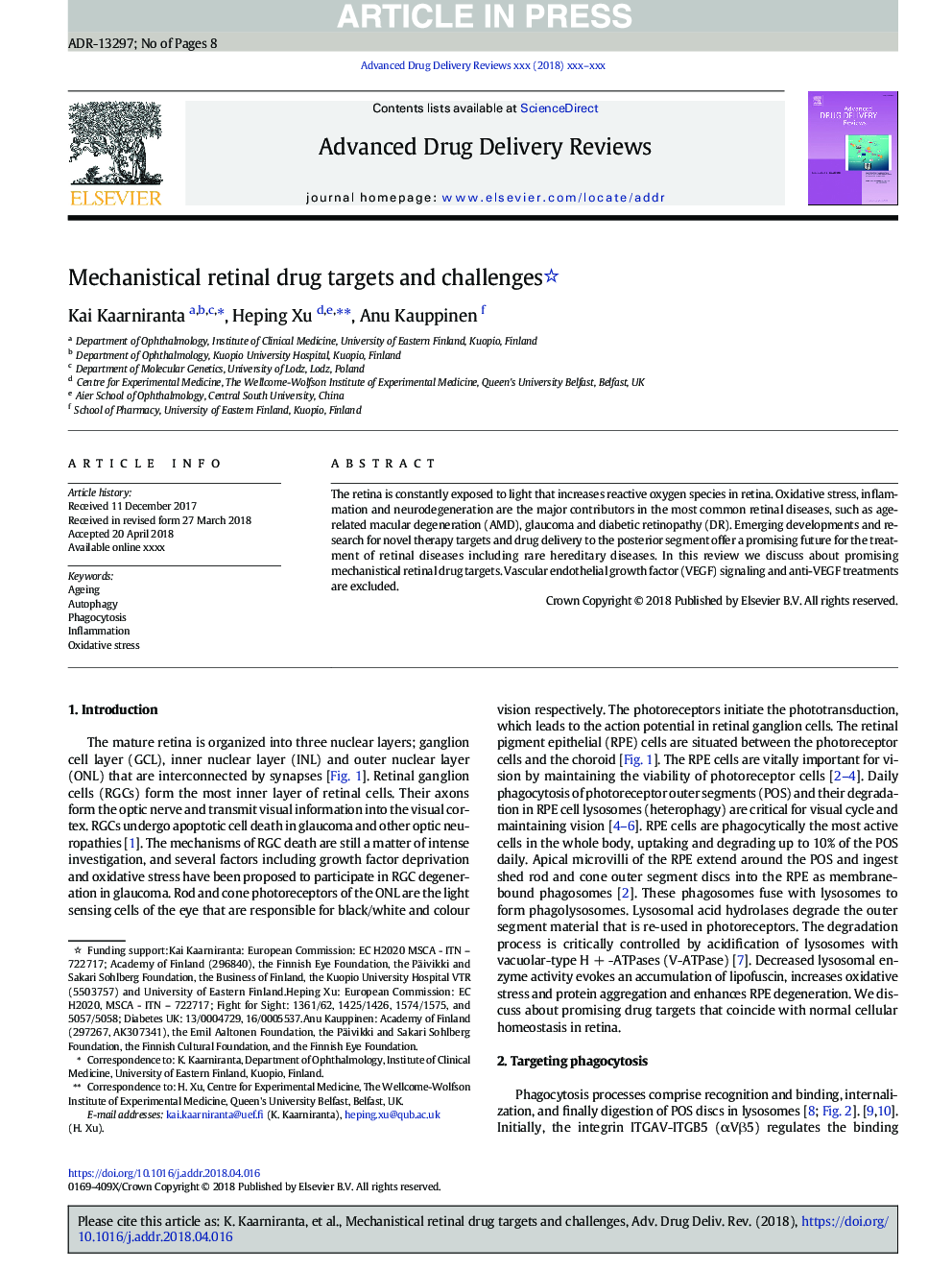| Article ID | Journal | Published Year | Pages | File Type |
|---|---|---|---|---|
| 8402122 | Advanced Drug Delivery Reviews | 2018 | 8 Pages |
Abstract
RPE cells in the macula are constantly exposed to the daily phagocytosis of photoreceptor outer segments (POS; heterophagy). In aged RPE cells, degradation of POS decreases and lipofuscin start to accumulate in lysosomes as a result of the coincident decline of lysosomal enzyme activity. The impaired lysosomal enzyme activity inhibits autophagic flux. Lipofuscin increases oxidative stress that lead to protein misfolding, cellular organelle damages and protein aggregation. Prior to aggregation, heat-shock proteins (Hsps) attempt to refold misfolded proteins. Once Hsp repair capacity is exceeded, individual polypeptides can be degraded by the ubiquitin (Ub) targeted proteasome, while aggregates are degraded by autophagy. p62/SQSTM1 sorts proteins between proteasomal and autophagic clearance pathways. It binds to Ub cargos and to LC3. Disturbed proteostasis and accumulated toxic compounds trigger the progression from para-inflammation to chronic inflammation and evoke the AMD-associated formation of extracellular drusen formation and complement activation. Similar intracellular mechanisms are obvious also in ganglion cells, photoreceptors and microglia, although lipofuscin accumulation is the most prominent in RPE cells and phagocytosis is characteristic in both RPE and microglia.196
Related Topics
Life Sciences
Biochemistry, Genetics and Molecular Biology
Biotechnology
Authors
Kai Kaarniranta, Heping Xu, Anu Kauppinen,
